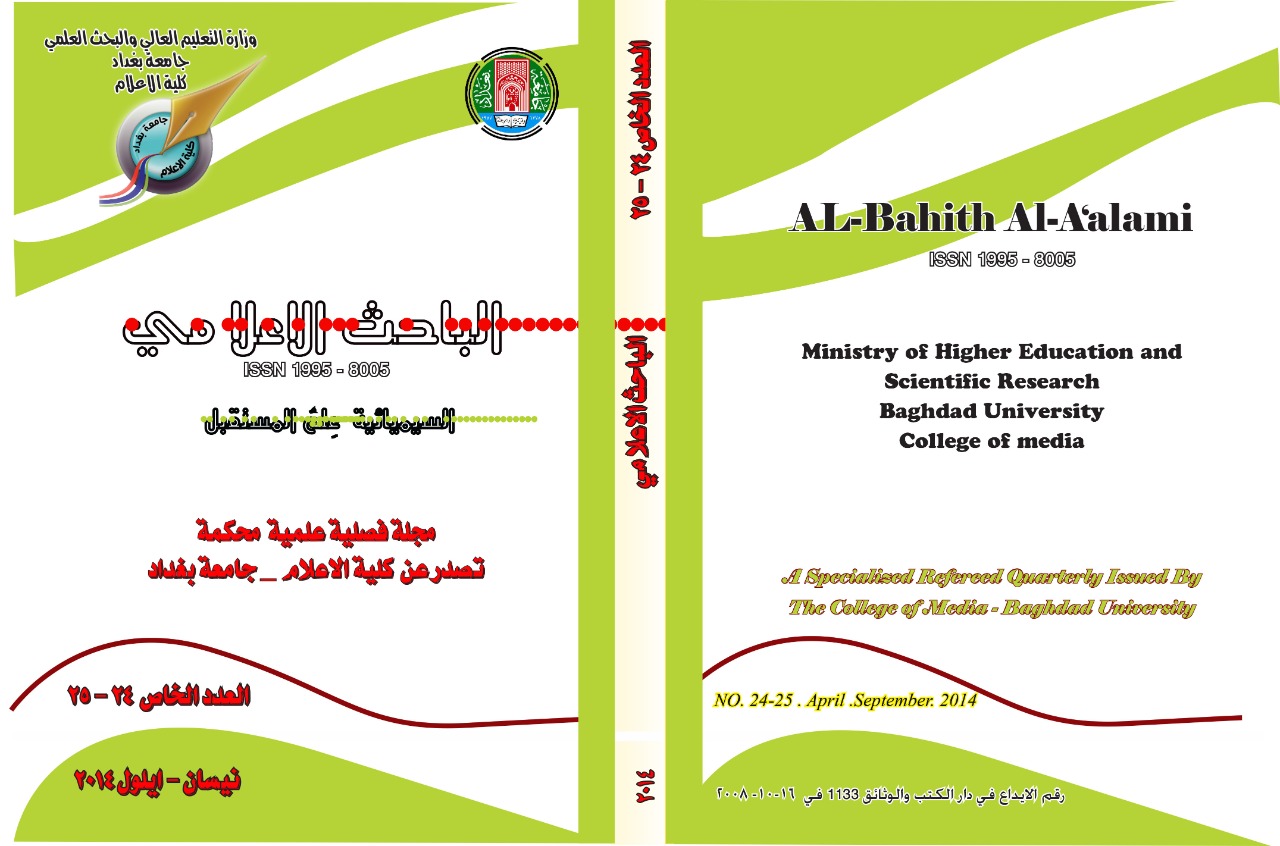Language Signs and Their Semantic Connotations in Shakespeare's Macbeth
DOI:
https://doi.org/10.33282/abaa.v6i24.641Keywords:
Language Signs, Semantic Connotations, Shakespeare's MacbethAbstract
Language is a form of human activity and this activity has represented in several expressive linguistic images accompanying man throughout history and ages.
Hence, many studies have been interested in this broad cognitive activity which sets limitations that harmonize with human life and development. So, the language of theater, with its formal structures and symbolic connotations, differs from other languages on the basis of a constructive point of view since it is an intense discourse itself. That is, each element has a specific place and function within the theater system.
The most important element of these elements is the spoken and non-spoken language as a general social phenomenon in a society. Such phenomenon can be studied in a scientific way based on standards and regulations that have aroused the interest of researchers in this aspect. Since language is what makes a certain society behave and think in a special way.
So, it is not just a way of expressing ideas; it is the aspect that shapes thoughts.
This is what this study tries to put forward. It is an attempt to delve deeper into the semantic connotations of language and how to produce the intellectual and artistic meaning envisioned through this language.
This meaning is embodied in theatrical art. This study took the task of researching the subject of language - that is, the text - in theater through a sample of one of the plays of the English writer (Shakespeare).
It is a play (Macbeth), which has been associated with human and social heritage throughout the ages. It was a literary example of studies and this included even psychological studies.
Therefore, the problem of this study revolves around such human product, which requires some research and knowledge of the entire system of this production. Semantic connotations of language – as an image - receive one of the most important concerns in this field.
Linguistic image is not accessible to all people until it is immediately realized. It is not a simple or poor reflection of reality that can be read directly. On the contrary, it imposes a cognitive effort and interpretation related to the collective culture of societies.
What is important is that linguistic image is a semantic transformation activity of that storage in order to produce a material with aesthetic harmonies through the image and its implications. Consequently, the researcher found the need to stand and then examine this problem; and formulate that problem in the form of a title emerged from the question that:
Does language and its semantic connotations influence the artistic theatrical achievement?
Therefore, the title of this study is as follows:
Language Signs and their Semantic Connotations in Shakespeare's Macbeth.
Downloads
References
، ط 1 2008 .
2.الأصوات والإشارات ، كندرا توف، ترجمة شوقي جلال ، القاهرة ، ب . ت .
3.البنيوية وعلم الإشارة ، ترنس هوكز، ترجمة مجيد الماشطة ، مراجعة
4.تأويل النص الشكسبيري في الخطاب السينمائي ، بان جبار خلف ، المؤسسة العامة للسينما ، دمشق 2008 .
5.التراجيديا الشكسبيرية ، أ.س.برادلي ، ترجمة سمير العكماوي ، القاهرة ، ب ت .د. ناصر حلاوي ، بغداد 1986 ، ط 1.
6.السيمياء العامة وسيمياء الأدب ، عبد الواحد مربط الدار العربية للعلوم ، الرباط 2010 ط 1.
7.شكسبير والأنسان المتوحد ، جانيت ديلون ، ترجمة جبرا إبراهيم جبرا ،دار المأمون ، بغداد 1986.
8.العلامة تحليل المفهوم وتاريخه ، اميرتو إيكو ، ترجمة سعيد بنكَراد ، راجعه : سعيد الفاتمي ، المركز الثقافي العربي ، بيروت 2007،ط1.
9.علم الدلالة ، بيرجيرد ، ترجمة د. منذر عياش ، دار طلاس للدراسات والترجمة والنشر ، دمشق
. 1992
10.علم الدلالة ،اف،ار،بالمر،ترجمة مجيد عبد الحليم الماشطة ، مطابع الجامعة المستنصرية ، بغداد
.1985
11.علم اللغة العام ، دي سوسير، ترجمة يوئيل يوسف عزيز ، سلسلة أفاق عربية ، بغداد 1985 .
12.قراءات في الخطاب الهرمثيوطيقي ، د. عامر عبد زيد ابن النديم للنشر والتوزيع ، وهران 2012 ، ط1.
13.قراءة بشرية للدين ، محمد مجتهد الشبستري ، ترجمة احمد القبانجي ، دار الفكر الجديد النجف، 2007 ، ط 1.
14.مدخل إلى السيميوطيقا ، ج1، إشراق سيزا قاسم ، نصر حامد أبو زيد دار اليأس العصرية ، القاهرة ، ب . ت. ، ط 2.
15.مقدمة إلى علم الدلالة الألسني ، هيربرت بركلي ، ترجمة د. قاسم مقداد ، دار نينوى للدراسات والنشر ، دمشق 2013 .
16.مكبث ، وليم شكسبير ، ترجمة جبرا إبراهيم جبرا ،دار المأمون ، بغداد 1986.
17.وهج المعاني ، سيميائيات ، الانساق الثقافية ، سعيد بنكَراد ، المركز الثقافي العربي ، الدار البيضاء ، 2013 ، ط 1 .
Issue
Section
License
Authors retain copyright and grant the journal right of first publication with the work simultaneously licensed under a Creative Commons Attribution License (CC BY 4.0) that allows sharing the work with recognition of authorship and initial publication in ABBA journal.


















